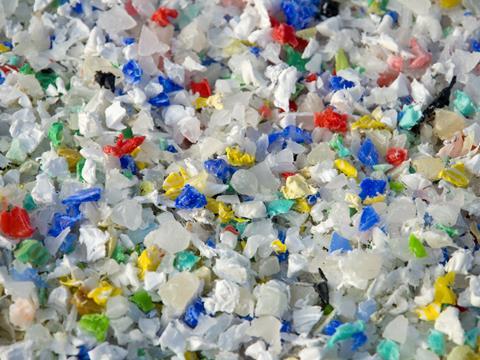
In this insight, Mark Victory, Senior Editor, Recycling at ICIS, discusses why packaging manufacturers are more price-sensitive than they have been for several years and the impact this is having on demand for recycled materials.
Demand across Europe for recycled polyolefins is expected to remain low for the remainder of 2023 as bearish macroeconomics continue to drag on the sector.
While some players in the recycled polypropylene (R-PP) and recycled high-density polyethylene (R-HDPE) sectors have seen a rebound in demand in September, linked primarily to some limited restocking following summer convertor outages, this is from a low base.
Underlying buying interest remains below that seen in September 2022, and there remain pellet producers in the R-PP sector that continue to operate at 50% of nameplate capacity - as they have done through the majority of 2023 due to narrow margins.
Although some costs, such as electricity, have fallen in 2023, they remain at elevated levels compared with historic norms, while flake and pellet prices have broadly fallen throughout 2023.
Coupled with this, most players’ inventory levels remain high throughout the chain, meaning any restocking effect is more limited than in previous years.
This is particularly true in Germany. For recycled low density polyethylene (R-LDPE) pellets there have so far been no signs of a pick-up in demand in September compared with August.
August is typically a low month for demand because many convertors shut operations for several weeks in July and August to do routine maintenance - a process that began earlier and lasted longer in 2023 due to narrow margins.
September typically sees a rebound in consumption as convertors restock following their outages.
European flexible post-commercial R-LDPE bale spot prices meanwhile are facing upward pressure in September, while flexible R-LDPE pellet spot prices are at parity with August monthly levels.
Rising flexible bale spot values were attributed to increasing export demand - particularly to Asia. Feedstock bale availability for natural transparent pellets is tight in northeast and southeast Asia.
A decline in manufacturing activities across multiple sectors in southeast and northeast Asia - resulting from high inflation - has limited input waste entering the chain and tightened supply.
September monthly negotiations across recycled polyethylene (R-PE) and R-PP markets are ongoing. Monthly negotiations in both chains typically settle at the end of the month.
Despite limited demand, there are signs that prices across the majority of R-PE and R-PP grades may now have bottomed out. This is the result of recent rises in virgin PE and PP values which have removed some of the substitution pressure away from recycled material seen in the past few months.
Although virgin and recycled polyolefin prices have largely decoupled, if recycled polyolefin prices become too uncompetitive with virgin material this typically still impacts demand.
This is particularly true of non-packaging applications, such as construction, where players typically buy recycled material based on cost-saving rather than necessarily for sustainability reasons.
Coupled with this, the cost-of-living crisis and ensuing bearish macroeconomic environment have made packaging manufacturers more price sensitive than they have been for several years.
This has meant that low prices for virgin and off-spec materials have had a negative impact on recycling demand through much of 2023 to date.
If you liked this article, you might also enjoy:
The L’Oréal approach to packaging sustainability
What steps is Apple taking to make its packaging more sustainable?
How did Brazil achieve its 100% aluminium can recycling rate – and can it be replicated in the EU?
Experts have their say on the EU’s Packaging and Packaging Waste Directive revisions


















No comments yet